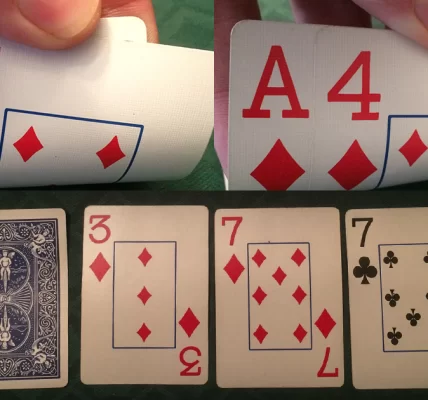For years, televised poker was the main event. You know the scene: the hushed commentary, the slow-motion river card, the dramatic chip count. It was compelling, sure. But honestly, the world of poker-themed entertainment has exploded far beyond that green felt rectangle on your TV screen. It’s no longer just about watching the pros; it’s about living the story, feeling the tension, and learning the game in ways that are as diverse as a deck of cards itself.
Streaming’s All-In Moment: Poker Finds a New Home
Let’s dive right in. The most seismic shift has been the rise of live streaming platforms like Twitch and YouTube. This isn’t your grandfather’s poker broadcast. It’s raw, unfiltered, and incredibly interactive. Top pros and charismatic amateurs alike broadcast their online sessions, talking through their thought processes in real-time.
It’s like sitting next to a grandmaster who’s explaining every move. You get the agony of a bad beat and the euphoria of a successful bluff, all with a live chat scrolling alongside. This format has created a new breed of poker celebrity—ones who are accessible, relatable, and building communities, not just fan bases.
Why Streaming Hits Different
So, what’s the big deal? Well, traditional TV had a barrier. Streaming smashes it. The content is…
- Unedited & Authentic: You see every hand, every mistake. There’s no producer cutting to commercial to hide the boring parts. The long grinds are part of the narrative.
- Highly Educational: Streamers often use screen-sharing software to show their hole cards, explaining why they raised, folded, or went all-in. It’s a masterclass in modern poker strategy.
- Driven by Community: The chat isn’t just background noise. It’s a core part of the experience. Viewers ask questions, make predictions, and form a tight-knit group around their favorite streamer.
Podcasts: The Sound of Strategy and Story
While streaming is a visual feast, podcasts offer a deep dive for your ears. They’ve become the go-to source for long-form interviews, strategy deep-dives, and the inside baseball of the poker world. You can listen while you drive, work out, or—and let’s be honest—grind your own online tables.
The beauty here is the variety. Some podcasts focus intensely on GTO (Game Theory Optimal) play, breaking down ranges and solver outputs. Others are pure entertainment, filled with wild stories from the road, high-stakes prop bets, and candid conversations with legends of the game. They humanize the icons and unpack the complex math in a way that’s, well, digestible.
Cinema and Series: The Drama of the Draw
Of course, we can’t ignore the power of a good story. Poker provides a perfect backdrop for cinematic tension. It’s a microcosm of conflict, psychology, and life-changing decisions. From classic films like Rounders to modern series like Netflix’s High Stakes, these narratives hook people who might never even play the game.
They explore the human element—the tells, the bluffs, the personal demons, and the triumphant comebacks. This kind of content doesn’t just entertain; it mythologizes the game. It creates an aura, a feeling, that draws new players in, eager to capture a sliver of that drama for themselves.
Video Games and VR: Playing in a New Reality
Remember playing Poker Night at the Inventory? Or the World Series of Poker games on console? Video games have long been a low-stakes training ground. But now, virtual reality is taking it to a whole new level.
Imagine putting on a headset and sitting at a fully immersive poker table. You can look your opponents in their virtual eyes, pick up on body language (or, you know, animated avatar language), and physically toss your chips into the pot. It’s the closest thing to a live game without leaving your house. This technology is still finding its footing, but the potential for social, interactive poker entertainment is absolutely massive.
The Social Media Bluff: Bitesized Poker Brilliance
Then there’s the chaotic, brilliant world of social media. TikTok, Instagram, and Twitter are flooded with poker content. We’re talking about 60-second hand breakdowns, hilarious memes about bad beats, and slick infographics on pot odds.
This is poker in its most digestible form. It’s designed for the scroll, offering quick hits of entertainment and education. A complex concept like implied odds gets explained in a 15-second video clip. A famous bluff is analyzed in three posts. It’s fragmented, sure, but it meets the modern audience exactly where they are.
So, What’s the Common Thread?
If you look across all these formats—streaming, podcasts, film, games—a clear pattern emerges. The old model was passive. You watched. The new model is active. You engage, you learn, you discuss, you even participate.
The audience isn’t just a spectator anymore; they’re part of the ecosystem. They’re in the Twitch chat, they’re commenting on the YouTube video, they’re debating a hand on Reddit. The content is no longer a one-way broadcast. It’s a conversation.
| Format | Core Appeal | Audience Role |
| Traditional TV | Polished Narrative, High Stakes | Passive Spectator |
| Live Streaming | Authenticity, Real-Time Learning | Active Participant |
| Podcasts | Deep Dives, Insider Access | Engaged Listener |
| Social Media | Bitesized Entertainment & Tips | Community Member |
In the end, the story of poker in media is a story of democratization. The table has gotten bigger, and there’s a seat for everyone. The drama isn’t confined to the final table of the WSOP anymore. It’s in a streamer’s risky bluff, a podcast host’s revealing interview, or a player’s first successful VR session. The cards are the same, but the game, the very way we experience it, has been completely reshuffled.






